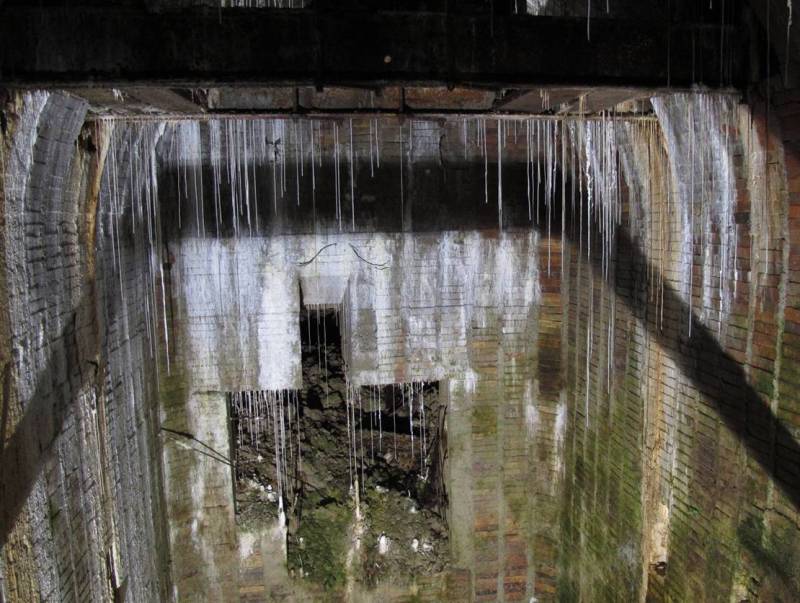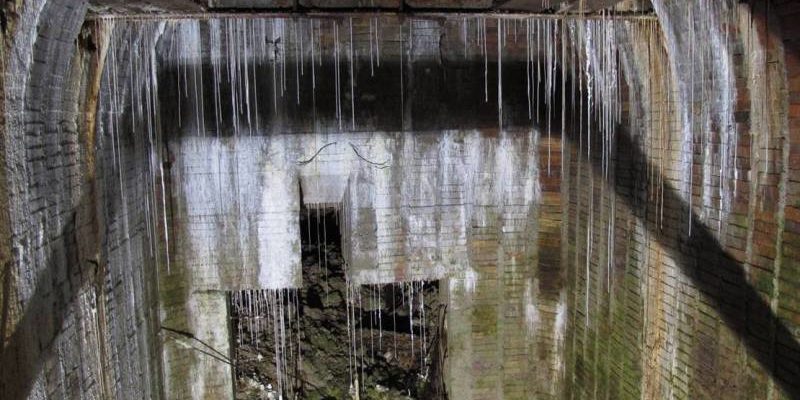It is known how slow the growth of formations is in caves. However it often happens, inside concrete tunnels, or in the dungeons of castles or even under the reinforced concrete beams that are exposed to weather conditions, to see formations of considerable size, despite the fact that the places from where they have originated have often been constructed recently. In the Hotel Jama, for example, very close to the Postumia Cave, up until a few years ago a small stalactite could be seen inside a covered terrace under which, a thick stalagmite was growing on the stone tiles. They were there due to a leak of the waterproofing of the terrace above.
Although this can seem strange, and in contrast with what is known about caves, we have to consider that at the origin of these formations there is not calcite, that is calcium carbonate, which is the main component of limestone rock. Cement is a mixture of various substances amongst which calcium hydroxide is always present. The water passing through microscopic lesions due to the cement drying, dissolves part of the calcium hydroxide and brings it to the surface, where in contact with the carbon dioxide, always present in the air;undergoes the process of carbonation, transforming into calcium carbonate. The process is particularly rapid therefore in the space of a few years stalactites can form, generally very slender, with dimensions reaching tens of metres. Flowstones are also quite common, stalagmites are rarer.
As opposed to formations in caves, where the calcite crystals that they are made of are generally visible to the naked eye, the formations originating from cement or from mortar are cryptocrystalline, that is formed by minute crystals visible only with a strong magnifying glass, or under a microscope. They are nearly always white and generally opaque and not translucent.

This extraordinary group of straws, some of which can get to length of about 1.5 metres, can be seen in a bunker dug out under the Berghof, the Summer residence owned by Adolf Hitler in the Obersalzerg (Baverian Alps). The water infiltrations have been caused by the intense bombings which, towards the end of the second world war, damaged the waterproofing of the basement. Below some stalagmites that have been reached the straws above can also be seen. Some small flowstones are forming on the walls, their yellow-orange colour is due to minute particles of rust originating from the oxidation of a steel beam.
Also in the Grotta del Vento, at the base of the Shaft of Infinity (Third Itinerary) some formations which have originated from cement can be seen. On the left, under the ramp of the walkway, you can see a small column formed by the joining of a straw and a stalagmite, on its left we can see a second straw and lower down a small flowstone. The picture on the right shows some stairs partially covered be small flowstones, caused by a slight water leak coming from a cement wall.






